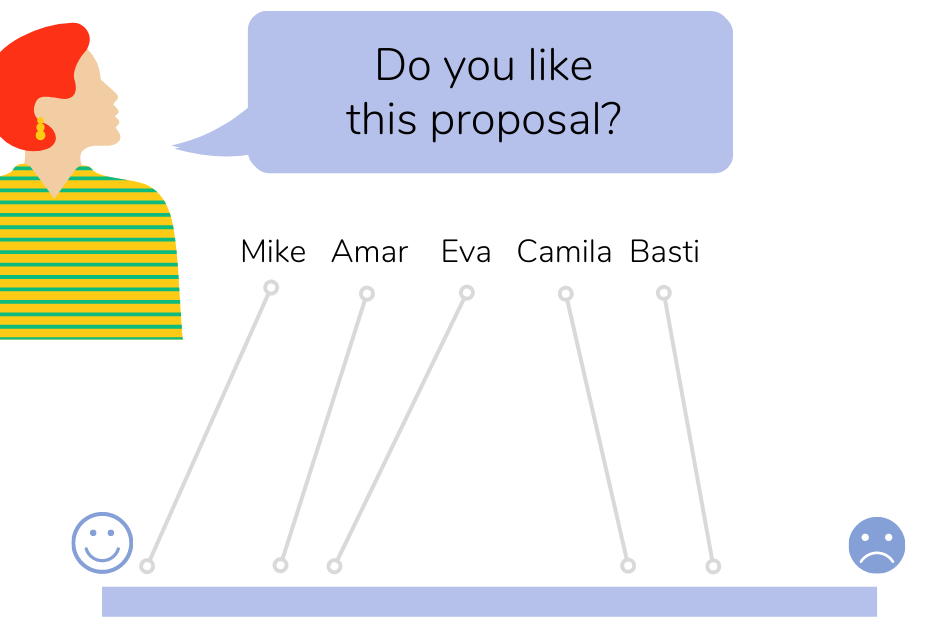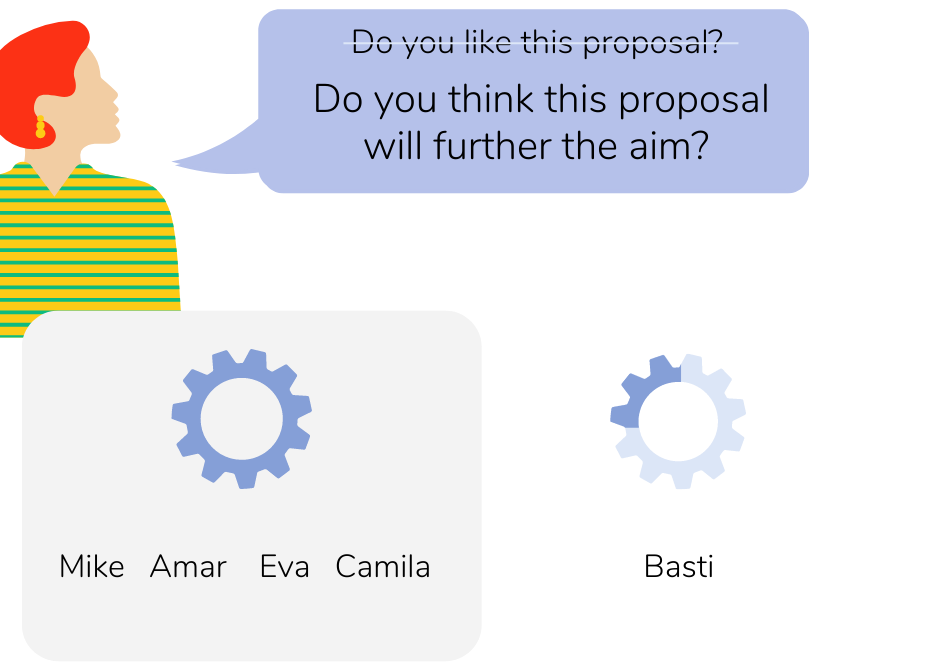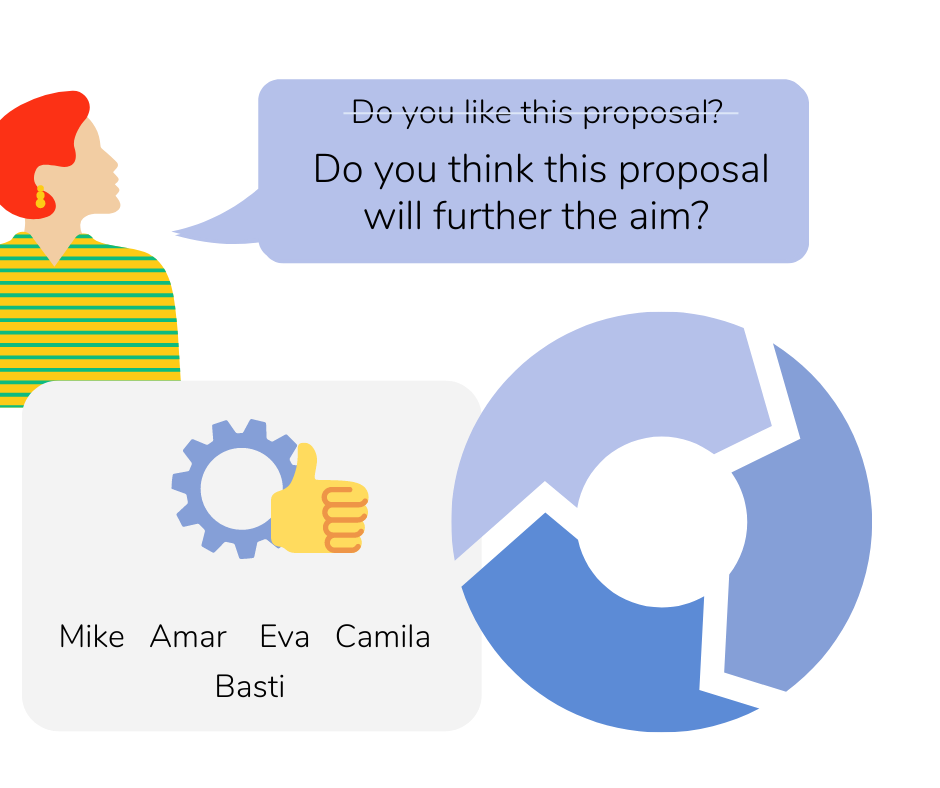
A common misunderstanding of the phrase “good enough to try”
cross-posted from Sociocracy for All
When a group wants to make a decision on a proposal, there are typically many opinions in the room. Mike is excited that the project is moving forward. Amar is appreciating the clarity. Basti is worried that it’ll cost more money than projected. And so on.
Let’s say the preferences look more of less like this:

So… do we approve the proposal and start working? Or not? When can we go do things?
What’s consent decision-making?
Different decision-making methods would lead to different decisions in this scenario. (See a comparison of decision-making methods.). What would happen in consent decision-making?
- In consent, a proposal moves forward when no one on the team objects.
- One objects when there’s a reason to believe that the proposal will negatively impact our capacity to achieve the aim of the group. (See more on consent here and a comparison with consensus here.)
Basically, this means that in consent, we move forward with a proposal when it doesn’t create harm. The slogan for that is good enough for now, safe enough to try.
In our above example, that means we have to change the question from Do you like this proposal? to Do you think this proposal will further or harm our aim?
We also have a created a binary system — the answer is either yes, or no.

In this case, it’s no because Basti still objects. Learn more about integrating objections. The group would continue refining the proposal until it is in fact good enough. Since our goal is just to find a proposal that doesn’t do harm, that’s typically relatively easy.
So is consent good enough?
Many people find consent decision-making liberating because it’s the work of the circle that determines our decisions, not people’s likes and dislikes. And it’s so much more pragmatic and faster than dealing with all the preferences.
Yet, others have a different response. They ask, wait, why would I settle for a proposal that’s just good enough? Why wouldn’t we make good plans? Why wouldn’t we make AWESOME plans?!
And I agree.
The real question is whether an awesome plan makes an awesome project.
In a VUCA [volitale, uncertain, complex, and ambigous -ed.] world, awesome doesn’t come from planning but from experimentation in the real world. Instead, we make good enough plans, and then we improve them!
No one knows everything. We try, we learn, we reflect together, we improve. Rinse, repeat. And again. Only experimentation helps us understand what’s working, and that’s why the bias towards trying something out and getting out of our head, and getting a show on the road is so important.
In good enough for now, all of that is in the innocent-looking phrase for now. It implies that we’re only determining for the moment whether something is good enough and that we’re improving our processes and that makes all the difference.
So, no, good enough is often not good enough to be awesome. Good enough for now, however, makes things awesome if we have our processes in place to learn and improve.





Add new comment